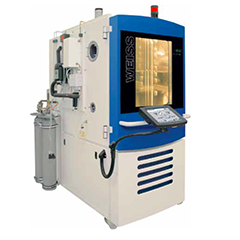The PV industry is perhaps more safety conscious than ever before, with an increasing focus on standards, quality of work and H&S. But what of the risks presented by fire? We take a look at the advances being made by Weiss Umwelttechnik GmbH.
In the course of the energy transition, a fifth of the total energy consumption has to be covered by renewable energies in all EU member states by 2020. One of the most important sources of this is the sun. In Germany, solar energy is already an important part of renewable electricity generation today: it amounts to 22 percent and is in third place after wind energy (33 percent) and biomass (27 percent). This corresponds to a volume of 35,200 gigawatt hours equating 6.9 percent of the German net energy consumption. 1.5 million PV-installations already in operation, and the extension of capacities is further progressing.
Testing for safe PV-installations
But while PV technology is spreading, so is the fear of a fire on the roof. The first fires of PV components have been known from the year 2006 but the amount is increasing from year to year. The most common cause of conflagration is localised overheating from, for instance, overvoltage and shorting defects. Short circuits can occur due to early ageing and contact corrosion of the different metals used in the installation. They can emerge due to environmental influences such as temperature and humidity fluctuations, to which an installation is permanently exposed.
The cases of fire over the last few years led to a high sensibility concerning the safety of PV-installations, especially in terms of roof installations and building integrated photovoltaics. Safety is therefore an important prerequisite for a further diffusion of PV-technology. And for that reason, the safety of PV- products is already ensured during the production process.



























